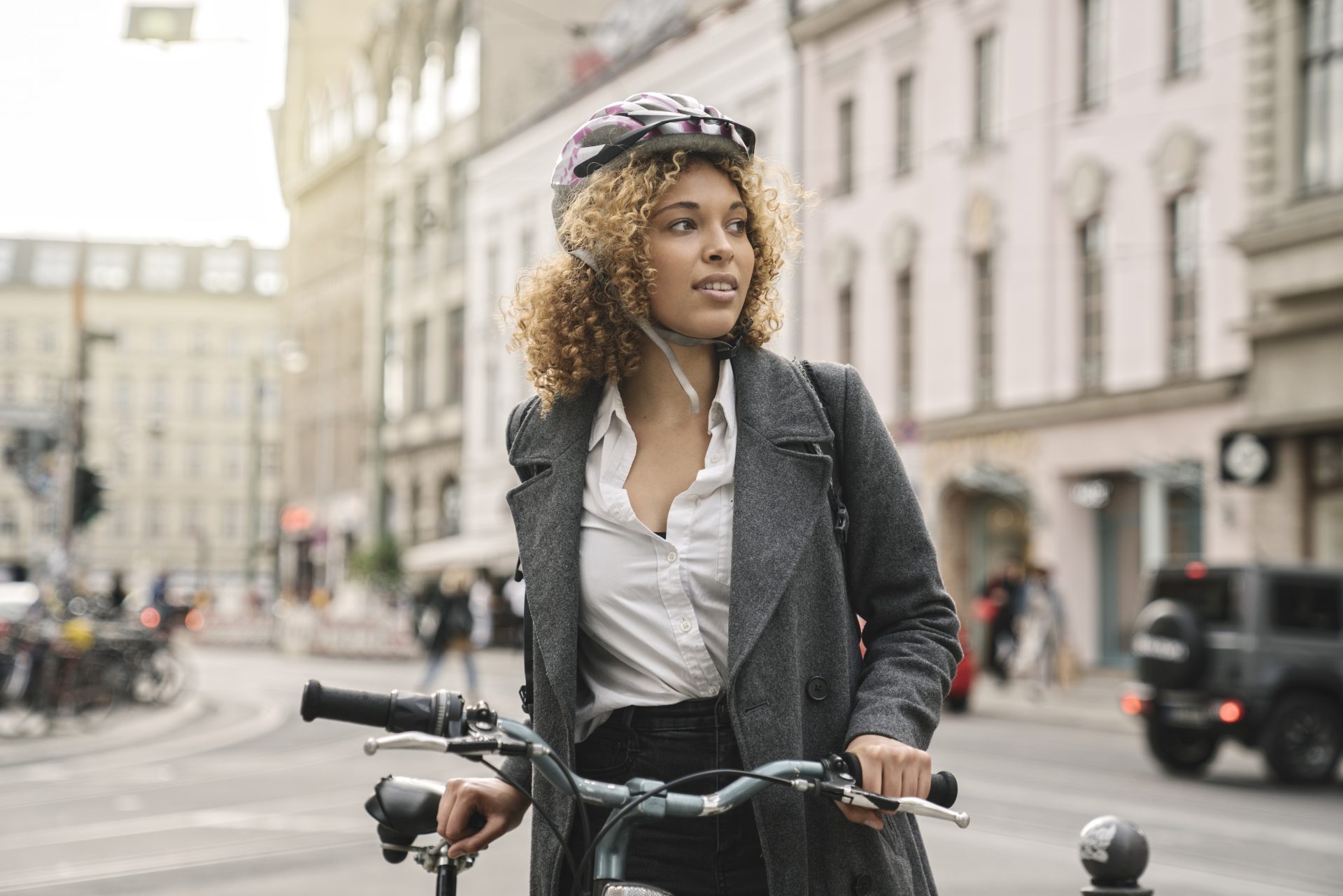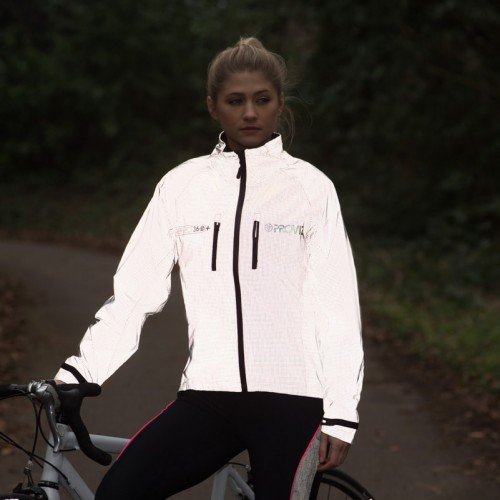11 tips for building confidence as a beginner cyclist
Want to cycle more but feel nervous about cars and traffic? There are plenty of ways to build your confidence on the road, without running the risk of being turned into jam. Here are our tried and tested tips for becoming a confident cyclist in no time.
Everyone knows that public transport in the summer is the worst. Sharing a carriage with people who insist on being mask-free or sitting behind someone eating fried chicken is bad at the best of times, but in the heat, everything becomes heightened. That’s where cycling comes in: being on a bike means staying in the outdoors – away from other passengers’ stinking foods, armpits and coffee breaths.
Many of us realised just how liberating cycling could be during lockdown, as bike sales increased by 63%. With no office to go to and fewer cars on the road, early 2020 was the perfect time to saddle up and peddle off for some socially distanced fun. Now that many of us are heading back into town, however, you might be wondering how to transform your lockdown habit into a full-time commute – without being hit by a car or turning up to work a sweaty mess.
You may also like
Does cycling build muscle? Here's how your new bike can help your strength goals
Cycling has so many benefits, from making your heart healthier to ensuring that you get your daily dose of vitamin D. Many of us know that using our bikes instead of cars or buses could make us healthier and happier, but traffic and organisation can be massive barriers to cycling. While we can’t control the traffic or weather, however, we can do a lot to stay safe and ensure that we arrive in comfort. With that in mind, here are our top tips for becoming a more confident cyclist.
Invest in a decent helmet
Rule number one: always wear a helmet. You might not think it’s necessary but it takes one accident to change your life, so for the love of God, please wear one.
Wearing a helmet can save your life. Looking at data from 64,000 injured cyclists worldwide, research published in the International Journal of Epidemiology found that wearing a bike helmet can reduce your risk of suffering a head or facial injury by up to 70%. It’s not just protection from cars that make helmets a non-negotiable accessory; cycling at 20 miles per hour means that you’re moving as fast as you would be if you jumped out of a second-story window. Getting your wheel stuck in a pot-hole or losing balance can be incredibly dangerous without a helmet. You might be able to land without cracking your head but given that head injuries account for nearly 20% of all cycling accidents, it’s simply not worth taking the risk.

Learn the rope in off-road
Right, safety chat out of the way, it’s time to actually get cycling. If you’ve not ridden a bike for a decade or you’re at all nervous, head to your local park, marsh, greenway or field to re-familiarise yourself with the actions. Do not try to reacquaint yourself on a road because that will end in disaster (for you, your bike and/or another cyclist).
Cycle on a Sunday
Cycling through cities can initially be scary and the way to get over any fear is to master the roads when they’re quiet. Sundays tend to be a lot calmer than other days, with fewer commuters and cabs around. Map out your commute and give it a go on a Sunday morning. The earlier you head out, the more traffic-free your routes will be.
Cycle into the road – not the curb
This may sound counterproductive but you’re safer cycling away from the curb. If a car does come close to you and you’re next to the pavement, you’re stuck; your wheel could jam against the curb and you’ll go flying. If, however, you cycle closer to the road edge of a cycle lane and a car starts to trespass across the line, you have room to maneuver. According to Cyclescheme, cycling away from the pavement is keeps you safer.
In fact, rule 163 of the Highway Code says that cars are supposed to give cyclists “at least as much room as a car” when overtaking. By cycling further out from the pavement, you’re forcing cars to overtake properly, rather than trying to squeeze past you – and that makes it a lot safer.
Use Strava for route planning
Strava is a God-send to all runners, walkers and cyclists because it tells you the distance and length of any given route, as well as offering heatmaps of the most popular paths. That means you’ll be able to see what side roads and shortcuts many cyclists use instead of having to spend 30 minutes trying to stay alive on a dual carriageway.
Find the Cycle SuperHighways
If you want the most direct route, look for segregated cycle lanes – like the Cycle SuperHighways in London. There’s a segregated highway that runs all the way from Stratford to Westminster and beyond, for example, which offers spectacular views of the Thames and an incredibly quick journey across town. Segregated lanes are brilliant because motorised vehicles can’t get anywhere near you.
Use bright lights and reflective clothing
The key to being safe on the road is being visible. A red flashing backlight helps cars and other cyclists to see you while a bright white light at the front will allow you to see in the dark and also make you visible to anyone coming towards you. They are annoying and you probably will forget them from time to time but it’s impossible to relax without them. You could also up your visibility by buying a reflective jacket like this one from Proviz (£119.99).

Carry a change of clothes
We may aspire to look like a chic Parisian woman on our Dutchie bikes, effortlessly peddling with a Hermes scarf wrapped around our necks and lovely fitted jeans but the reality of cycling is a little different. You will get a little sticky and sweaty if you’re cycling at any speed – especially if you’re carrying a rucksack. That’s OK!
Just pack a spare change of clothes to wear at the office and you’ll be fine. You may get away with sitting in slightly pungent leggings at a cafe but it’s not really on when your colleagues have to sit next to you all day.
Remember, it’s not a race
The MAMILs (Middle-Aged Men In Lycra) might jump every red light in sight but for the rest of us, commuter cycling doesn’t have to be a race. There’s no point in jumping traffic lights or killing yourself to go at a brake-neck speed only to end up feeling frazzled before your day’s even begun.
Take it easy, leave yourself plenty of time and enjoy the ride. No one cares how fast you go, so long as you’re not sitting in the middle of the cycle lane stopping other people from getting by.
Weather-proof your cycle
Sweating outdoors every day means that you’re exposing your skin to UV rays all the time. Even in the winter, you’ll be more tanned than other people and as it gets more sunny and hot, you need to make sure that you’re covered in sunscreen to avoid burning and rogue sunspots.
In the same breath, it’s also a great idea to buy a pair of waterproof trousers that you can pull over your jeans when it’s raining to keep your clothes try (especially if you don’t have a splash guard on your bike). You’ve got to be prepared for all weathers.
Try a cycling proficiency course
Still feeling nervous? Cycling proficiency courses are designed to hone your urban cycling skills, from route planning to making hand signals and understanding the priority of traffic on the road.
You can find a course here.
Want to become a stronger cyclist? Have a go at our latest bodyweight video series on Strong Women Training Club, which will boost your endurance, strength and balance – all of which are key to cycling comfortably and confidently.
Source: Read Full Article


